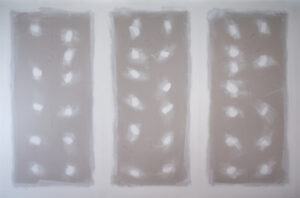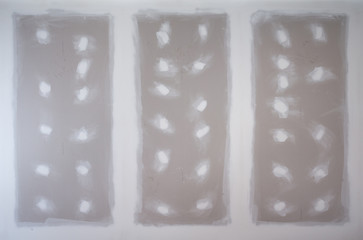Drywall Repair Las Vegas is a simple home improvement that will make your walls look like new. It can even be a fun project that you can do yourself.
Whether you’re a homeowner or a serial renter, learning how to patch and repair drywall is an essential skill. Luckily, it’s not as hard as it looks!
Drywall is a ubiquitous material in modern homes, providing cheap, fire-resistant shelter and insulation. It isn’t indestructible, however. From run-ins with the vacuum cleaner to children flinging toys at the wall, drywall can get dented and scraped. The good news is that fixing drywall is relatively simple. In fact, if the damage isn’t too severe, patching, not replacement, should be your first course of action.
The simplest way to repair a small hole is to purchase a drywall patch kit and follow the instructions. Before applying the patch, lightly sand or scrape the edges of the hole to create a smooth surface. This will help hide the patch when you paint over it.
Start by measuring the size of the hole and subtracting a few inches to ensure that the patch will fit properly. You can cut the patch to size using a utility knife or a jab saw, but this is risky and messy. A better option is to use a straight edge, such as the top of a door frame or the edge of a stud, and a pencil to trace around the edges of the hole. Then, use a utility knife to cut along the line you’ve drawn. The resulting piece of patch can then be nailed in place.
Once the patch is in place, apply two coats of drywall compound to it with a putty knife. Let the first coat dry before applying the second, and then sand it with a 100-grit sanding sponge. Be sure to sand in a circular motion, not back and forth. Wipe away all sanding dust with a clean rag.
Then paint the patch to match the rest of the wall. It might take two coats to completely hide the patch.
Larger holes, such as those caused by nails and screws, may require more extensive drywall repair, but even these are within the capabilities of most homeowners. You will need to cut a new piece of drywall and secure it with drywall tape and joint compound, but this is less time-consuming than replacing the entire sheet.
Drywall Replacement
Drywall is a versatile, cost-effective material that’s nearly ubiquitous in modern construction. But it’s not indestructible, and even the most carefully built walls can suffer from dents, cracks, and even holes that may require drywall replacement. Fortunately, this is usually a relatively simple process for DIY homeowners and can be done in a few days to a week or so, depending on the size of the damaged area and the amount of work needed to do it.
Small dents and isolated holes from hanger nails or furniture banging against the wall can be repaired with a patch kit that includes spackle, a drywall putty knife, and a quart of color-matched paint to touch up afterward. These kits can be purchased for around $50 to $55 and will provide all the materials you need to repair minor blemishes.
For larger holes, you can use a self-adhering fiberglass mesh patch to cover the damage. For best results, use a stud finder to locate the center of each stud on either side of the hole before placing the patch, then apply a second coat of compound to hide the edges of the new drywall. Let the second coat dry completely before applying a third and final coat of joint compound, then sand until smooth.
When two pieces of drywall meet at an outside corner, they’re usually concealed by an L-shaped metal strip called a “metal corner bead” that’s nailed in place and hidden by two or three layers of joint compound. But this edge of the drywall can become dented through a variety of activities, including run-ins with vacuum cleaners, children flinging toys against the wall, or moving furniture. If the drywall has been badly scuffed or gouged, you can cover it with a small sheet of drywall cut from another part of the room and nail it into place, then cover it with more compound and a second layer of sanding before painting.
While minor blemishes like dents and nail holes can be covered with a dab of paint that matches the rest of the wall, more serious cracks, especially ones that occur along a horizontal seam, can indicate a structural problem that requires professional attention. A qualified inspector can help identify the source of the crack and determine whether it’s worth the effort and expense of replacing the drywall.
Drywall Repairs
When drywall gets damaged, it’s important to repair the damage promptly. This will help prevent moisture damage and mold. It will also prevent the need for more extensive repairs in the future. There are several methods of repairing drywall, depending on the type of damage. Small holes and cracks can usually be repaired with a drywall patch kit. Larger holes may require additional backing support or a larger piece of drywall. In some cases, it may be necessary to replace a section of drywall entirely.
When two sheets of drywall meet at a wall corner, they’re held together by a metal strip called a corner bead. This can become dented from activities such as vacuuming or from children flinging toys against the walls. The good news is that repairing a dented corner bead is very simple.
The first step is to apply a thin coat of spackling paste or joint compound over the damaged area. Use a putty knife to spread the compound and make it flush with the surrounding wall. Then sand the repaired area until it is smooth and ready to paint.
If your drywall has cracks that are too large to patch, you can fill the cracks with self-adhering fiberglass mesh tape. Apply a thin coat of joint compound over the tape, then sand until it is smooth and ready to paint. If you have vertical cracks, you can also fill them with a flexible crack cover.
Small dents and scrapes can usually be covered with a quick touch-up of paint. This will hide the repair and allow it to blend in with the rest of the wall or ceiling. If the blemish is very large, you may need to repaint the entire room.
For a more permanent repair, you can use a drywall patch kit to fix small holes. This kit will contain a new patch, a roll of joint tape, and a box of drywall screws. The patch can be cut to the size of the hole with a utility knife. Once the patch is in place, apply a crisscross pattern of joint compound over it using a putty knife. When the compound is dry, you can sand it to create a smooth surface and feather the edges so that the repair blends into the existing wall.
Drywall Repair Cost
Drywall is the most common building material in homes. It consists of thin sheets that are adhered to one another with a joint compound, also known as drywall mud or gypsum wallboard. Damage to drywall can be costly, depending on the extent of the repairs needed. Repairs can be as simple as patching holes or as complex as replacing a whole sheet of drywall.
A drywall professional’s rates typically start at $70 per hour, and the price of materials depends on the type of issue and how severe it is. For example, a patching project may cost $60 to $200 for labor and materials, but a large hole repair might be more than double that. A drywall contractor can diagnose the exact issues and give you an accurate estimate for each item on the repair list.
Most drywall problems are cosmetic in nature and don’t affect the structure of a home. However, if you see cracks forming under and around windows or doors, it could be an indication of a problem with the foundation or a shift in your home’s structural components. In that case, a professional will need to inspect the entire area to determine the cause of the cracks and what kind of repair work is necessary.
Many homeowners may be able to fix minor indentations, abrasions, and scrapes themselves with some spackle and a smoothing tool. For larger holes, a drywall patch kit can be used to fill in the hole and then sanded down for a smooth surface that’s ready to paint.
Small hairline cracks up to 1/8 inch wide can be fixed with caulk and don’t usually require a professional, but extensive cracks can cost $100 to $400 to repair using wood supports, new drywall sections, adhesive, and multiple coats of compound. Cracks can appear in a variety of places and can be caused by a number of factors, including a shift in your home’s structural components, movement in framing lumber, or even expansion and contraction of the concrete in your foundation.
Drywall contractors aren’t required to provide a warranty for their work, but some do so as a form of customer service and to help protect their customers. It’s important to get a detailed estimate, contract, and warranty in writing before the work begins.
